-
 Bitcoin
Bitcoin $76,886.4434
-3.13% -
 Ethereum
Ethereum $1,463.6255
-7.20% -
 Tether USDt
Tether USDt $0.9994
-0.02% -
 XRP
XRP $1.8048
-3.36% -
 BNB
BNB $550.7300
-1.47% -
 USDC
USDC $1.0002
0.01% -
 Solana
Solana $105.5371
-3.09% -
 TRON
TRON $0.2284
-1.76% -
 Dogecoin
Dogecoin $0.1448
-3.06% -
 Cardano
Cardano $0.5678
-3.04% -
 UNUS SED LEO
UNUS SED LEO $9.1608
2.13% -
 Toncoin
Toncoin $3.0398
-2.18% -
 Chainlink
Chainlink $11.2017
-3.46% -
 Avalanche
Avalanche $16.6426
-2.93% -
 Stellar
Stellar $0.2214
-3.87% -
 Hedera
Hedera $0.1530
-3.00% -
 Shiba Inu
Shiba Inu $0.0...01092
-3.54% -
 Sui
Sui $1.9411
-3.68% -
 MANTRA
MANTRA $6.2960
0.29% -
 Bitcoin Cash
Bitcoin Cash $274.2997
-0.93% -
 Polkadot
Polkadot $3.4444
-4.30% -
 Dai
Dai $1.0000
0.00% -
 Litecoin
Litecoin $70.0828
-1.91% -
 Ethena USDe
Ethena USDe $0.9985
-0.05% -
 Bitget Token
Bitget Token $4.0855
-2.13% -
 Hyperliquid
Hyperliquid $12.2516
2.47% -
 Pi
Pi $0.5610
-4.24% -
 Monero
Monero $194.7464
-6.15% -
 OKB
OKB $50.9623
-2.28% -
 Uniswap
Uniswap $4.8064
-7.32%
What is the "Impossible Triangle" of blockchain? What aspects does it include?
Blockchain's "Impossible Triangle" forces a trade-off between security, decentralization, and scalability; maximizing one often compromises the others, necessitating careful design choices based on application needs.
Mar 04, 2025 at 12:54 am
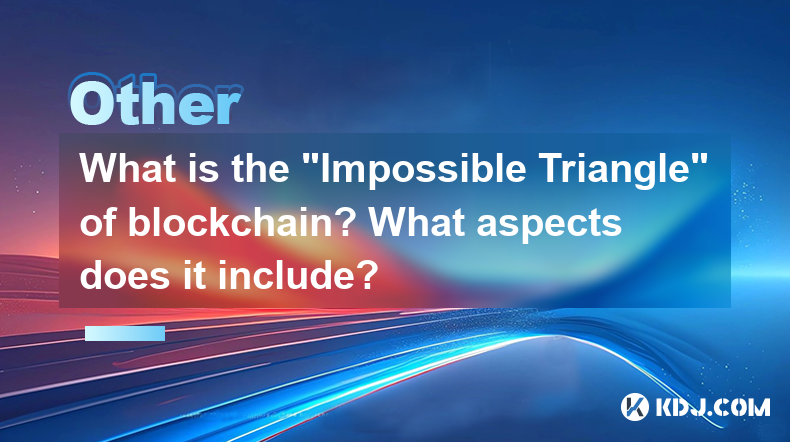
Key Points:
- The "Impossible Triangle" of blockchain highlights the inherent trade-off between security, decentralization, and scalability.
- No blockchain can optimally achieve all three simultaneously. Improvements in one area often necessitate compromises in others.
- Understanding this trade-off is crucial for choosing the right blockchain for specific applications.
- Different blockchains prioritize different aspects of the triangle, leading to diverse designs and functionalities.
What is the "Impossible Triangle" of blockchain?
The "Impossible Triangle" in blockchain technology describes the inherent conflict between three highly desirable attributes: security, decentralization, and scalability. It suggests that a blockchain cannot simultaneously excel in all three areas. Attempts to maximize one often lead to compromises in the others. This limitation stems from fundamental design choices and technological constraints. The challenge lies in finding the optimal balance based on the specific needs of the blockchain's intended use.
What aspects does the Impossible Triangle include?
The three vertices of the Impossible Triangle represent:
- Security: This refers to the blockchain's resistance to attacks, such as 51% attacks, double-spending, and data manipulation. A secure blockchain ensures the integrity and trustworthiness of its data. Higher security often involves more complex consensus mechanisms and potentially slower transaction processing.
- Decentralization: This signifies the distribution of power and control across a network of nodes, rather than being concentrated in a single entity. Decentralization enhances resilience against censorship and single points of failure. However, achieving high decentralization can complicate consensus mechanisms and reduce transaction speed.
- Scalability: This represents the blockchain's ability to handle a large number of transactions per second (TPS) without compromising performance or increasing costs. High scalability is crucial for widespread adoption and real-world applications. Improving scalability often involves sacrificing decentralization or security through techniques like sharding or layer-2 solutions.
Exploring the Trade-offs:
Let's examine the trade-offs involved in pursuing each aspect:
- Security vs. Scalability: Highly secure blockchains, like Bitcoin, often employ robust consensus mechanisms (like Proof-of-Work) that are computationally intensive, resulting in lower transaction throughput. Improving scalability often necessitates compromising on security, for example, by reducing the computational requirements for consensus.
- Security vs. Decentralization: A highly centralized blockchain, where a small number of nodes control the network, can achieve higher scalability and faster transaction speeds. However, this centralization makes it vulnerable to attacks and censorship. Conversely, a highly decentralized system is more secure but less scalable.
- Decentralization vs. Scalability: Achieving high decentralization necessitates a large network of nodes, which can slow down transaction processing. Increasing scalability often requires techniques that compromise decentralization, such as employing trusted validators or reducing the number of participating nodes.
Examples of Blockchain Approaches and Their Trade-offs:
Different blockchains prioritize different aspects of the triangle, leading to diverse designs:
- Bitcoin: Prioritizes security and decentralization, sacrificing scalability. Its Proof-of-Work consensus mechanism ensures high security but limits transaction speed.
- Ethereum: Aims for a balance between security, decentralization, and scalability. It employs Proof-of-Stake (initially Proof-of-Work), which improves scalability compared to Bitcoin but still faces limitations. Layer-2 solutions are employed to further enhance scalability.
- Solana: Prioritizes scalability through a unique consensus mechanism, potentially compromising decentralization and security to some degree. The high throughput comes at the cost of potential vulnerabilities.
- Cardano: Focuses on security and scalability through a layered architecture and a Proof-of-Stake consensus mechanism. It attempts to achieve a better balance compared to Bitcoin and Ethereum.
Addressing Layer-2 Solutions:
Layer-2 solutions are increasingly important in addressing the scalability limitations of many blockchains. These solutions operate on top of the main blockchain (Layer-1) and handle transactions off-chain, thereby increasing throughput without sacrificing Layer-1 security or decentralization. Examples include state channels, rollups, and sidechains. However, these solutions often introduce complexities and may still have limitations in terms of decentralization or security depending on their design.
Understanding the Implications:
The Impossible Triangle is not an insurmountable barrier. It highlights a crucial design consideration. Developers must carefully weigh the trade-offs when designing a blockchain. The choice of which aspect to prioritize depends heavily on the intended use case. For example, a blockchain designed for financial transactions might prioritize security and decentralization, even at the cost of scalability. A blockchain designed for supply chain management might prioritize scalability to handle large volumes of data, even if it means compromising slightly on decentralization.
Common Questions and Answers:
Q: Can a blockchain ever perfectly achieve all three aspects of the Impossible Triangle?
A: No, the Impossible Triangle highlights a fundamental trade-off. Perfect simultaneous optimization of security, decentralization, and scalability is currently considered impossible due to inherent technological constraints.
Q: What is the significance of the Impossible Triangle for blockchain development?
A: The Impossible Triangle forces developers to make conscious design choices. Understanding this trade-off is crucial for creating blockchains that effectively meet the needs of their intended use cases.
Q: How do Layer-2 solutions address the Impossible Triangle?
A: Layer-2 solutions aim to enhance scalability without sacrificing Layer-1 security or decentralization by moving transaction processing off the main chain. However, they introduce additional complexities and may still have trade-offs.
Q: Is one aspect of the Impossible Triangle more important than the others?
A: The relative importance of security, decentralization, and scalability depends entirely on the specific application of the blockchain. There is no universally "best" prioritization.
Disclaimer:info@kdj.com
The information provided is not trading advice. kdj.com does not assume any responsibility for any investments made based on the information provided in this article. Cryptocurrencies are highly volatile and it is highly recommended that you invest with caution after thorough research!
If you believe that the content used on this website infringes your copyright, please contact us immediately (info@kdj.com) and we will delete it promptly.
- BTCC Expands Its Spot Market Offering With the Listing of 10 Trending Altcoin Pairs
- 2025-04-09 15:00:13
- Bitso-backed Juno Labs Enters the Stablecoin Market with MXNB, a Mexican Peso-pegged Token
- 2025-04-09 15:00:13
- Paribu is launching during Paris Blockchain Week 2025 with international ambitions
- 2025-04-09 14:55:13
- GameStop's Bitcoin (BTC) investment decision poked fun at by Jason Calacanis
- 2025-04-09 14:55:13
- Solana (SOL) Price Plunges Over 6% to Trade at $103.63
- 2025-04-09 14:50:13
- The results of the Trump tariffs are coming in already and most of the market assets are taking a nosedive
- 2025-04-09 14:50:13
Related knowledge
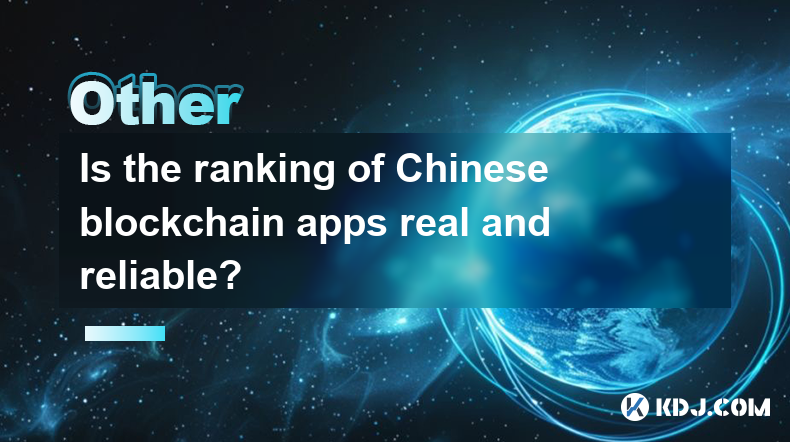
Is the ranking of Chinese blockchain apps real and reliable?
Apr 04,2025 at 09:01pm
The ranking of Chinese blockchain apps has become a topic of interest for many in the cryptocurrency community, as it provides insights into the popularity and adoption of blockchain technology within China. However, the reliability and authenticity of these rankings are often questioned. This article aims to delve into the factors that influence these ...
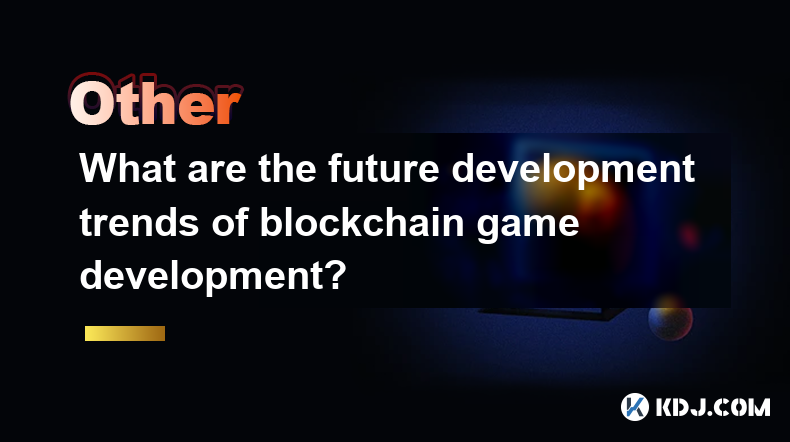
What are the future development trends of blockchain game development?
Apr 03,2025 at 05:00am
Blockchain technology has revolutionized various industries, and gaming is no exception. As we look to the future, several trends are set to shape the development of blockchain games. These trends not only promise to enhance the gaming experience but also to integrate blockchain technology more seamlessly into the gaming ecosystem. Let's explore these t...
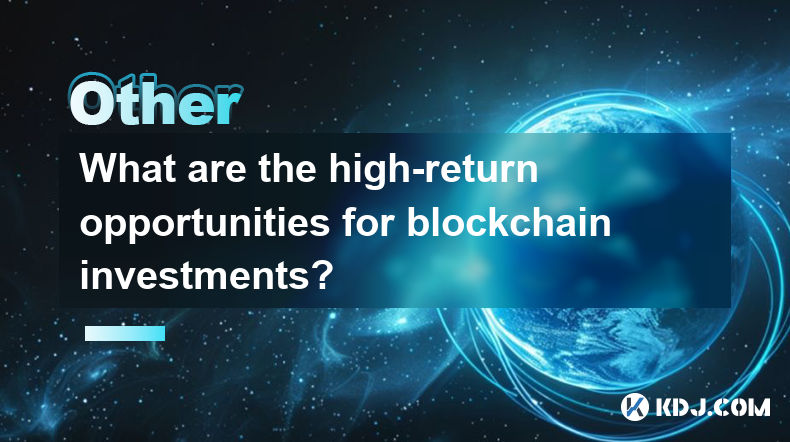
What are the high-return opportunities for blockchain investments?
Apr 05,2025 at 02:35pm
Blockchain technology has revolutionized the financial world, offering numerous high-return investment opportunities. These opportunities span various sectors within the cryptocurrency ecosystem, including cryptocurrencies, decentralized finance (DeFi), non-fungible tokens (NFTs), and blockchain startups. Each of these areas presents unique risks and re...
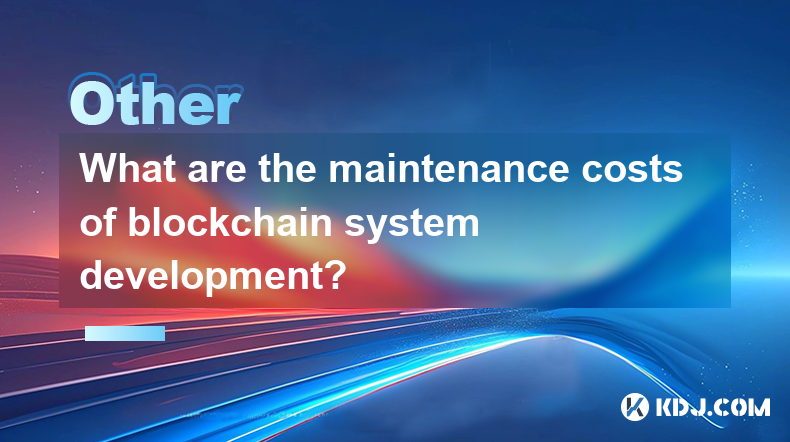
What are the maintenance costs of blockchain system development?
Apr 03,2025 at 06:07pm
The maintenance costs of blockchain system development are multifaceted and depend on various factors. These costs can include technical maintenance, security updates, infrastructure expenses, and personnel costs. Understanding these elements is crucial for anyone planning to develop or maintain a blockchain system. Technical MaintenanceTechnical mainte...
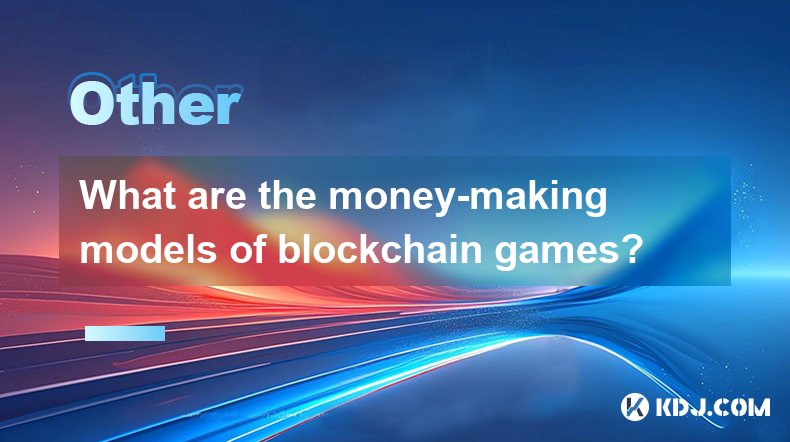
What are the money-making models of blockchain games?
Apr 04,2025 at 02:00pm
Blockchain games have emerged as a revolutionary way for players to earn real money while enjoying their favorite pastime. These games leverage the power of blockchain technology to create unique money-making models that benefit both the players and the developers. In this article, we will explore the various money-making models of blockchain games and ...
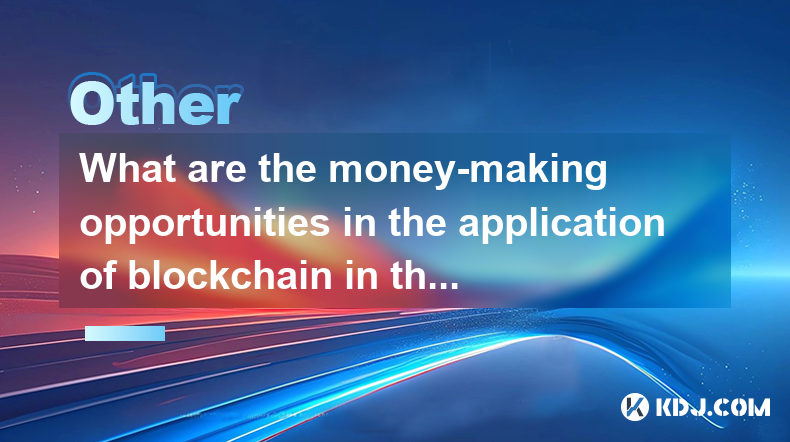
What are the money-making opportunities in the application of blockchain in the field of Internet of Things?
Apr 05,2025 at 10:35pm
The integration of blockchain technology with the Internet of Things (IoT) presents numerous money-making opportunities. Blockchain, with its decentralized and secure nature, can revolutionize how IoT devices interact, manage data, and conduct transactions. This article will explore various avenues where entrepreneurs, developers, and investors can capi...

Is the ranking of Chinese blockchain apps real and reliable?
Apr 04,2025 at 09:01pm
The ranking of Chinese blockchain apps has become a topic of interest for many in the cryptocurrency community, as it provides insights into the popularity and adoption of blockchain technology within China. However, the reliability and authenticity of these rankings are often questioned. This article aims to delve into the factors that influence these ...

What are the future development trends of blockchain game development?
Apr 03,2025 at 05:00am
Blockchain technology has revolutionized various industries, and gaming is no exception. As we look to the future, several trends are set to shape the development of blockchain games. These trends not only promise to enhance the gaming experience but also to integrate blockchain technology more seamlessly into the gaming ecosystem. Let's explore these t...

What are the high-return opportunities for blockchain investments?
Apr 05,2025 at 02:35pm
Blockchain technology has revolutionized the financial world, offering numerous high-return investment opportunities. These opportunities span various sectors within the cryptocurrency ecosystem, including cryptocurrencies, decentralized finance (DeFi), non-fungible tokens (NFTs), and blockchain startups. Each of these areas presents unique risks and re...

What are the maintenance costs of blockchain system development?
Apr 03,2025 at 06:07pm
The maintenance costs of blockchain system development are multifaceted and depend on various factors. These costs can include technical maintenance, security updates, infrastructure expenses, and personnel costs. Understanding these elements is crucial for anyone planning to develop or maintain a blockchain system. Technical MaintenanceTechnical mainte...

What are the money-making models of blockchain games?
Apr 04,2025 at 02:00pm
Blockchain games have emerged as a revolutionary way for players to earn real money while enjoying their favorite pastime. These games leverage the power of blockchain technology to create unique money-making models that benefit both the players and the developers. In this article, we will explore the various money-making models of blockchain games and ...

What are the money-making opportunities in the application of blockchain in the field of Internet of Things?
Apr 05,2025 at 10:35pm
The integration of blockchain technology with the Internet of Things (IoT) presents numerous money-making opportunities. Blockchain, with its decentralized and secure nature, can revolutionize how IoT devices interact, manage data, and conduct transactions. This article will explore various avenues where entrepreneurs, developers, and investors can capi...
See all articles























































































